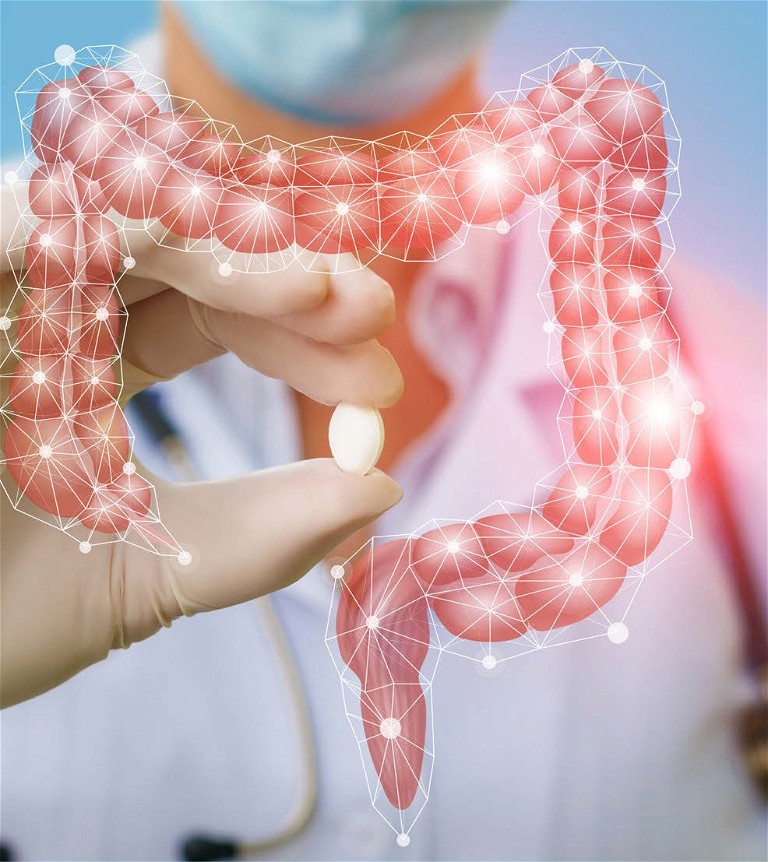Manufacturing: Capsuling
Next-Generation Enteric Capsule Innovation: How Next-Gen Capsule Technology is Helping API Reach Deeper into the Small Intestine
How are current events in drug development demanding better enteric delivery solutions, and how is material science and manufacturing innovation creating a purpose-built capsule able to go the distance – all while reducing the cost and complexity of enteric development and delivery?
Julien Lamps at Lonza
Finding effective ways to deliver active pharmaceutical ingredients (APIs) deeper into the gastrointestinal tract has always been challenging to oral drug developers. Drugs headed for the distal portion of the small intestine need to pass intact through the oesophagus, stomach and the initial portion of the small intestine before reaching its intended destination.
Familiar and easy to swallow, capsules offer a proven, effective way to deliver active ingredients into the gastrointestinal tract in an oral solid dose form (OSDF). However, using capsules to deliver drugs enterically is challenging, especially to achieve the dissolution and disintegration profiles demanded by today’s advanced formulas and therapeutics. Capsule development and capabilities in this area continue to advance, and this includes innovation in material science and capsule engineering to ensure a better enteric delivery profile. There is a pressing market need for an effective oral delivery solution for treatments that are easily degraded by acidic stomach conditions as well as enabling the delivery of live biotherapeutic products – anew and innovative class of treatments.
Encapsulating Next-Generation Microbiome Therapeutics
Delivery of API deeper in the small intestine supports the efficacy of a broad range of drug substances from small molecules, peptides, proteins and RNA-based therapeutics. Presenting at CPHI, Microbiome Solutions’ director Christian Roghi predicted microbial therapeutics will be the next breakthrough in novel drugs. Comparing them to mAbs, siRNA and CAR T-cells and their potential impact on patient care, Roghi noted accelerated momentum in microbiome research over the last five years, with about 524 microbiome-based therapeutics in the pipeline.1
According to Roghi, roughly half of all these therapeutics (48%) are in preclinical development, while a slightly smaller percentage (42%) are in clinical development. Despite considerable barriers to commercial application, Roghi notes that, at the end of 2022, there were several candidates in late-stage trials, and predicts many will be approved within the next two years.1Including drugs, probiotics, prebiotics, foods and diagnostic tests, the global human microbiome market is projected to grow to $894m by 2025, then expand to an estimated at $1.6bn in 2028. 2,3,4The majority of microbiome-based therapies under development today target diseases of the gastrointestinal tract, cancer, immunological disorders and neurological conditions involving the gut-brain axis and infectious diseases.
In a rapidly growing market, microbiome-based therapies are in high demand, yet many are abandoned due to challenges in the drug development pipeline. Of the microbiome drug candidates, 36% were abandoned in the drug development pipeline between 2018 and 2021.5Significant challenges exist in achieving targeted drug delivery and providing enteric protection for drugs that are heat- or acid-sensitive.
Capsule Engineering and Material Science Introduce a Better Solution
For the better part of a decade or more, successfully delivering a formulation enterically in a capsule required sealing and specialised coatings, adding cost and complexity to development. Whether incorporating hypromellose (hydroxypropylmethylcellulose-acetate succinate [HPMC-AS]) or gelatin polymers, depending on formulation, current enteric delivery technologies still require coatings or auxiliary sealing. Both of those elements add cost and complexity to drug development and manufacturing. Delivering the fragile, acid-sensitive formulations now in development demanded a more effective solution.

Fortunately, recent advances in capsule technology are offering drug developers a much more effective capsule-based vehicle for enteric applications that protect APIs and formulations without coatings or a special sealing system.
Dissolution and Disintegration Performance Without Coatings or Sealing
Two fundamental actions, disintegration and dissolution, determine the protection and release of the drug substance in the gastrointestinal tract. Capsules can now combine HPMC and hydroxypropylmethylcellulose - acetate succinate (HPMC-AS) polymers in two layers to create an oral dosage form that provides an acid resistance up to pH 6.0 without coating.
Internal disintegration performance tests demonstrated no opening of the capsule in HCl 0.1N for two hours and then a rapid disintegration in the buffer stage (pH 6.8). Throughout the two hours in HCl 0.1N, only minor deformations of the capsule were observed. Results were independent of filling levels and required no banding or sealing. Dissolution tests demonstrated the capsule exhibited no drug release or product degradation in the acid stage (HCI 0.1 N) for up to two hours and then a rapid dissolution: 98% after 30 minutes in the buffer stage (pH 6.8). Additionally, the acid protection of the capsule was confirmed using a model protein drug, pancrelipase, showing that this capsule can be applied to a broad range of APIs.6
In-Vivo Disintegration
The capsule’s disintegration was evaluated in vivo in fasted healthy volunteers using two independent detection techniques: MRI and caffeine detection in saliva.7No breeching of capsules in the stomach were observed, confirming the enteric properties of the capsule. The capsules opened in the jejunum (3/8), ileum (4/8) or colon (1/8). On average, the capsules opened in 45 minutes by MRI and 36 minutes by caffeine appearance respectively (excluding the colonic disintegration due to exceptionally fast oro-cecal transit in one subject) after gastric emptying. This time, the interval from leaving the stomach until the capsules disintegrated also persists after a prolonged residence time in the stomach, and confirms a robust enteric composition of the capsules.
Further, an influence of gastric residence time on subsequent disintegration was not observed. The study demonstrated no capsule disintegrated nor the release of caffeine in the stomach irrespective of transit times, confirming robust enteric properties by MRI and caffeine release. Despite minor differences, the same conclusions regarding the capsule’s performance could be obtained from both methods, which strengthen the overall results.
Integral Mechanical Seal and Structural Integrity Improves Filling/Finishing Throughput
Providing leak-free containment, the capsule features a patented two-ring closure locking system that ensures reliable delivery of API as well as facilitating high-speed filling and processing. Structural rigidity and brittleness of hard gelatin and single polymer HPMC-based capsules formulated for enteric delivery became another issue pharma’s enteric drug developers had to cope with. By forming the capsule in a two-layer process with two HPMC polymers, both impact resistance and brittleness are addressed, mitigating these potential quality issues before filling operations begin. Mechanical robustness tests demonstrated the enteric capsules exhibited excellent mechanical properties in all tested conditions. The brittleness of these next-generation enteric capsules is in line with the mechanical properties of current ‘pure’ HPMC capsules. They also showed better resistance to impact compared to standard gelatine capsules in storage conditions with relative humidity (RH) below 33%.
Removing Barriers to Therapeutic Innovation One Capsule at a Time
Pharma’s therapeutic innovation never stands still but its success is critically dependent on a broad range of specific technologies needed to treat patients effectively.
That includes the humble but capable capsule. Of all the drug products in development that require oral delivery, microbiome therapeutics offer amazing therapeutic potential, but only if they can go the distance and be delivered in the right segment of the gastrointestinal tract. By combining key enabling technologies and experience, there is now a capsule more capable of enabling the successful development and enteric delivery of actives.
References

Julien Lamps graduated from Ecole Nationale Supérieure de Chimie de Lille with an Engineering degree in Chemistry in 2004. Julien joined Lonza as a quality assurance engineer in the Colmar plant in 2011. In this role he worked at the interphase of Operations and Customers within the well-known Capsugel Quality Mindset. He specialised in coordinating new product introductions to develop innovative offers around modified release profiles and also inhalation products. He is now associate director for the hard empty capsules portfolio.